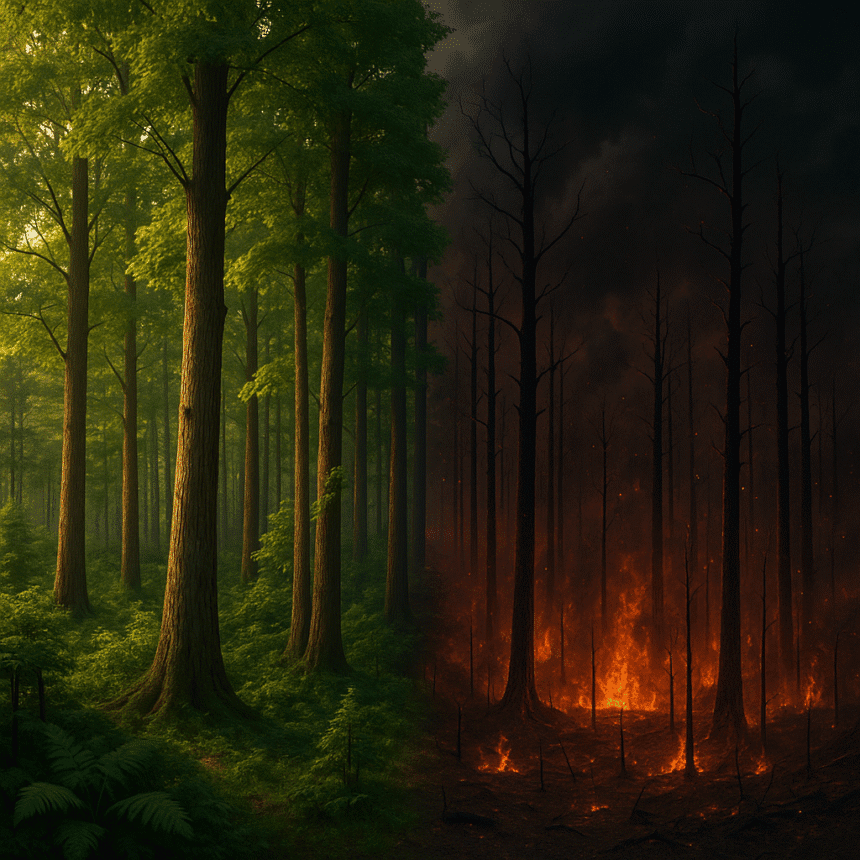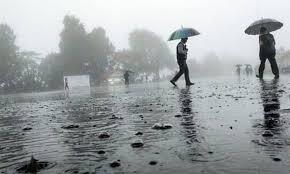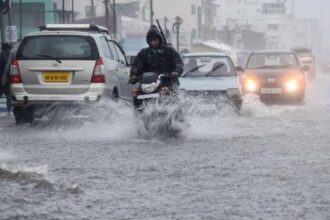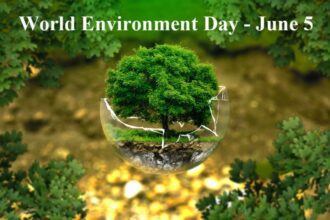Forests Meant to Save the Climate
May Be Fueling the Fire
While forests are often viewed as vital tools in the fight against climate change, a new report reveals that certain efforts to preserve and expand them could actually be doing more harm than good.
According to a recent study by the United Nations University Institute for Water, Environment and Health (UNU-INWEH), initiatives like forest conservation and tree planting—especially those tied to carbon offset markets—may unintentionally increase the risk of severe wildfires, transforming forests into major sources of carbon emissions.
In recent years, intense wildfires have scorched vast areas in regions such as Canada, Australia, Siberia, and the Amazon. Just this week, wildfires forced the evacuation of thousands across Manitoba and Alberta in Canada. These fires have become so extreme that forests, traditionally considered carbon sinks, are now turning into carbon sources.
“Forests and peatlands in many areas are now emitting more carbon than they absorb due to escalating wildfire activity,” the report states, highlighting a blind spot in many climate policies. These emissions are often overlooked in global carbon accounting and mitigation strategies.
A core concern is the voluntary carbon market a system where companies purchase carbon credits by funding forest projects to offset their emissions. Although this market has drawn billions in investment, it remains largely unregulated and lacks thorough evaluation of environmental risks like fire.
The report’s lead author, Ju Hyoung Lee, a research fellow at UNU, noted that the 2023 Canadian wildfires released more greenhouse gases than the total industrial emissions of every country except China and India. Similarly, in 2024, California wildfires destroyed forests designated as carbon storage under the state’s cap-and-trade program.
The study warns that many forest-based offset projects rely on outdated wildfire risk assessments that fail to reflect current and worsening fire conditions. Typically, these assessments use historical data, often excluding the most recent and catastrophic wildfire years.
“This results in a dangerous underestimation of fire risk,” Lee explained, noting that the forests we have today are not the same as they were two decades ago.
Organizations that certify these projects, such as Verra, often don’t account for the changing nature of forest ecosystems. Verra did not provide a comment in response to the report.
UNU-INWEH Director Kaveh Madani emphasized that while not all forest projects are harmful, many are based on scientific assumptions that are now outdated. “We need to rethink our approach to forest carbon projects to avoid unintentionally increasing emissions,” he said.
The report calls for urgent reforms to the voluntary carbon market. It recommends integrating up-to-date forest monitoring using tools like satellite imagery to better evaluate fire risks, soil conditions, and climate factors like drought and extreme heat before approving carbon offset projects.
By considering environmental variables such as soil moisture, rainfall trends, and future climate projections, forest carbon strategies can be made safer and more effective. Projects in high-risk areas may need to be excluded entirely to prevent them from becoming carbon sources in the future.
“The risks posed by wildfires must be a central part of how we design and manage carbon reduction programs going forward,” Madani concluded.












